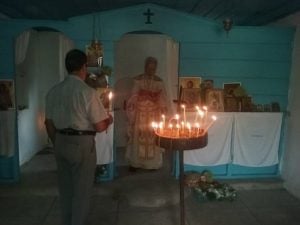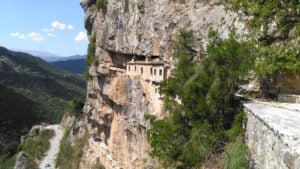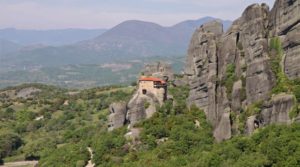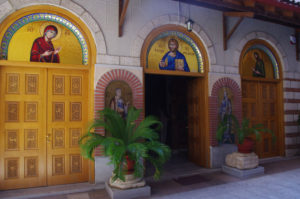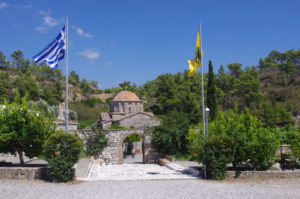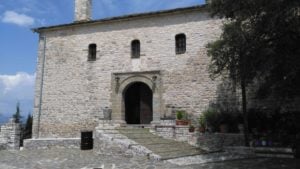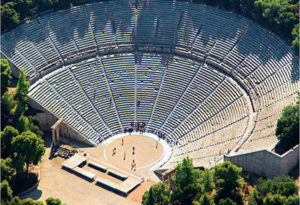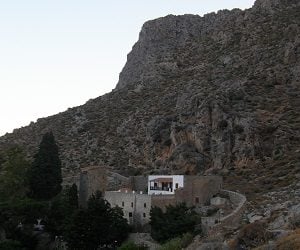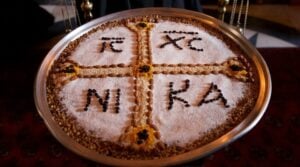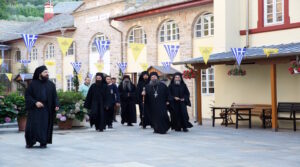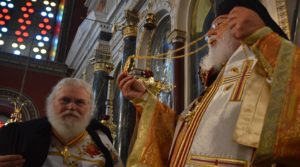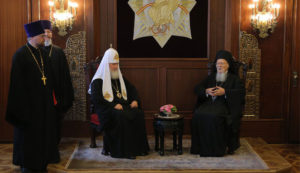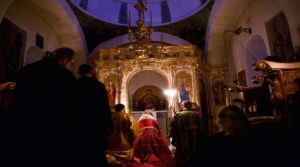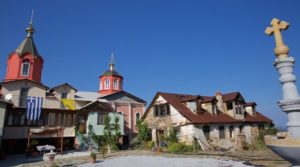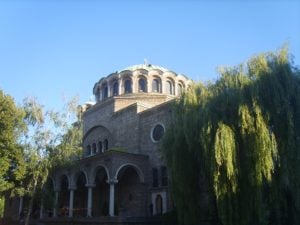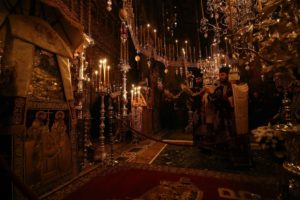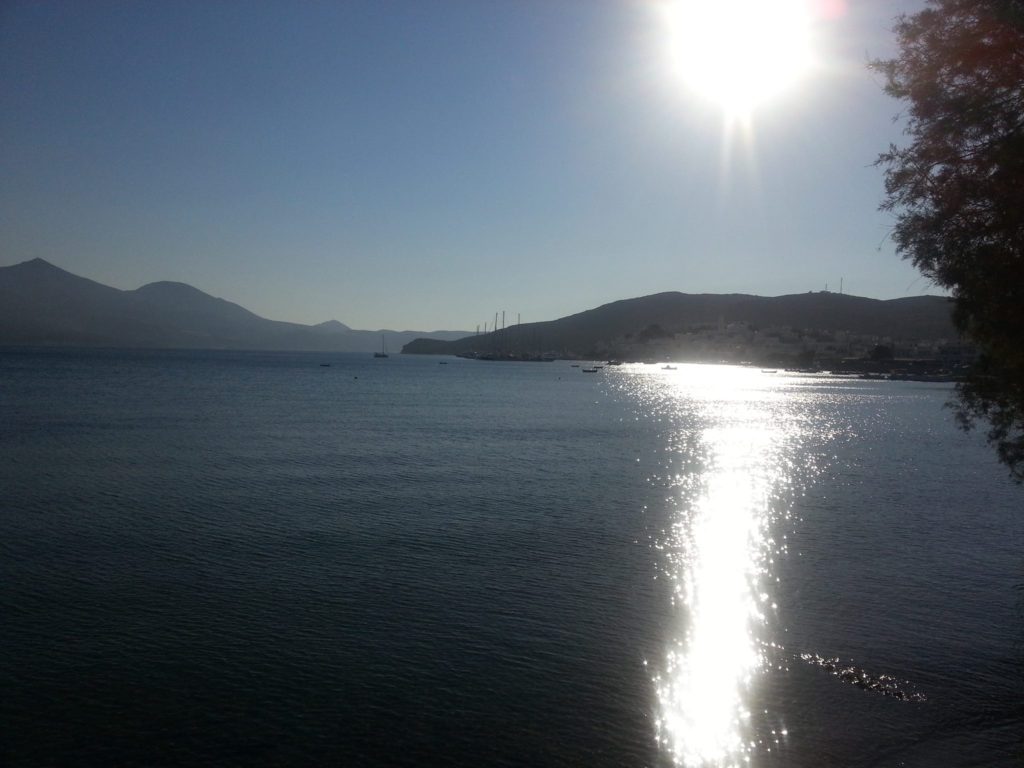
Milos, in the western Cyclades, is a special island because of its geological activity. It was famous even in antiquity, thanks to its volcanic nature and to obsidian, an important mineral in the Stone and Bronze Ages.
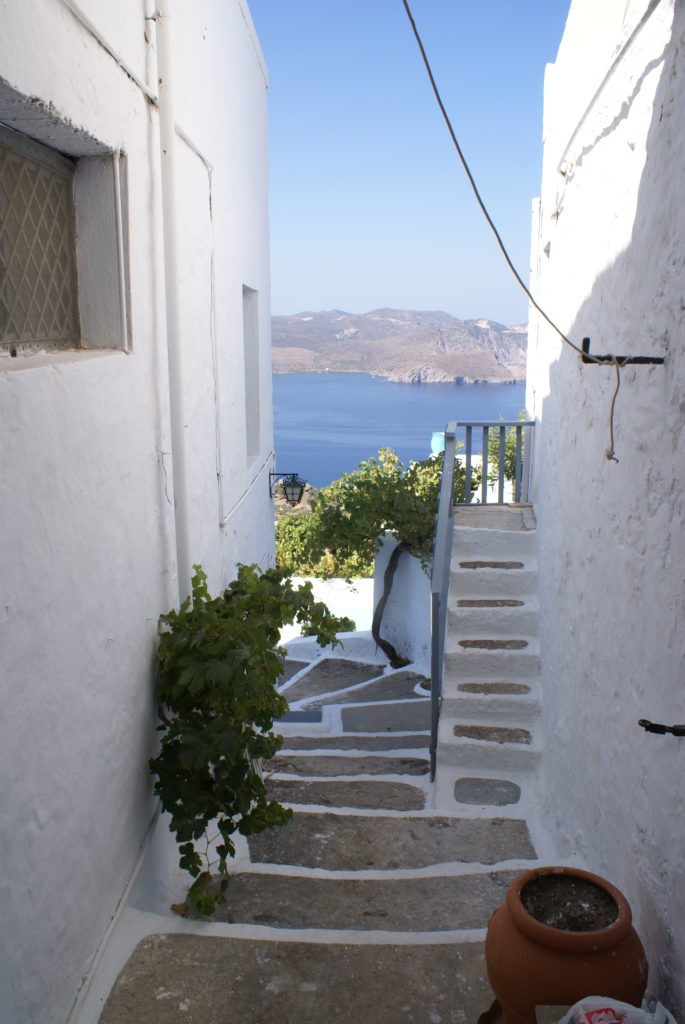
The alleys of Plaka, with their Cycladic pattern. Blue and white are the dominant colours for houses and buildings alike.
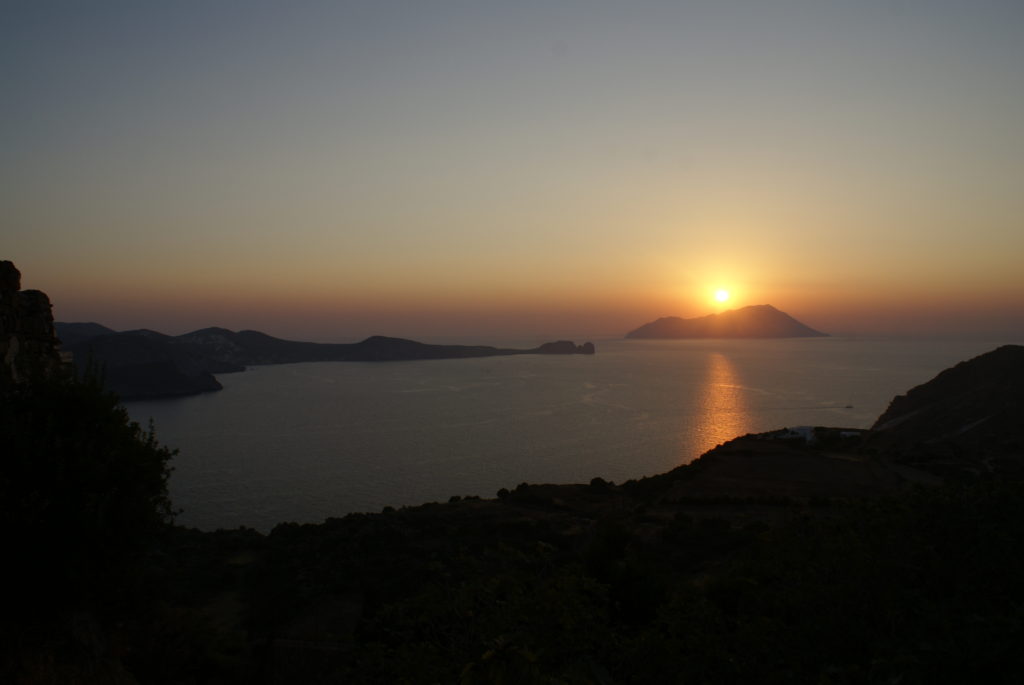
Sunset in Plaka is as beautiful as that in Santorini.
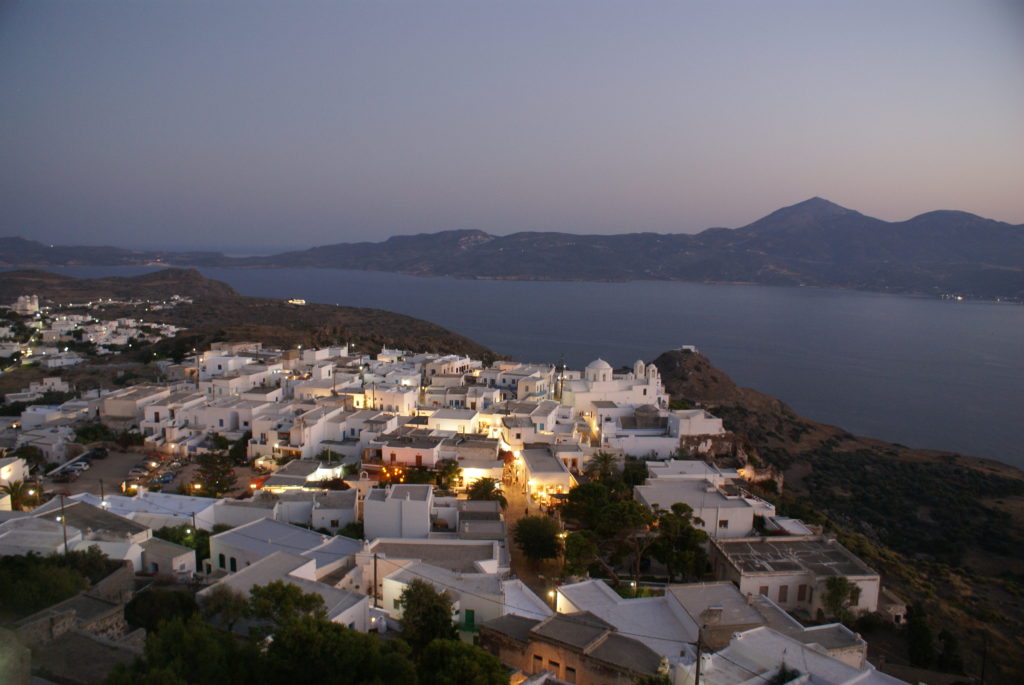
The Fortress in Plaka on Milos is built on the hill of the Prophet Elijah. It was constructed at the time of the Duchy of Naxos and has no walls, but, like most of the fortresses in the Cyclades is a fortified neighbourhood, protected by the way the buildings have been constructed. The view is enchanting.
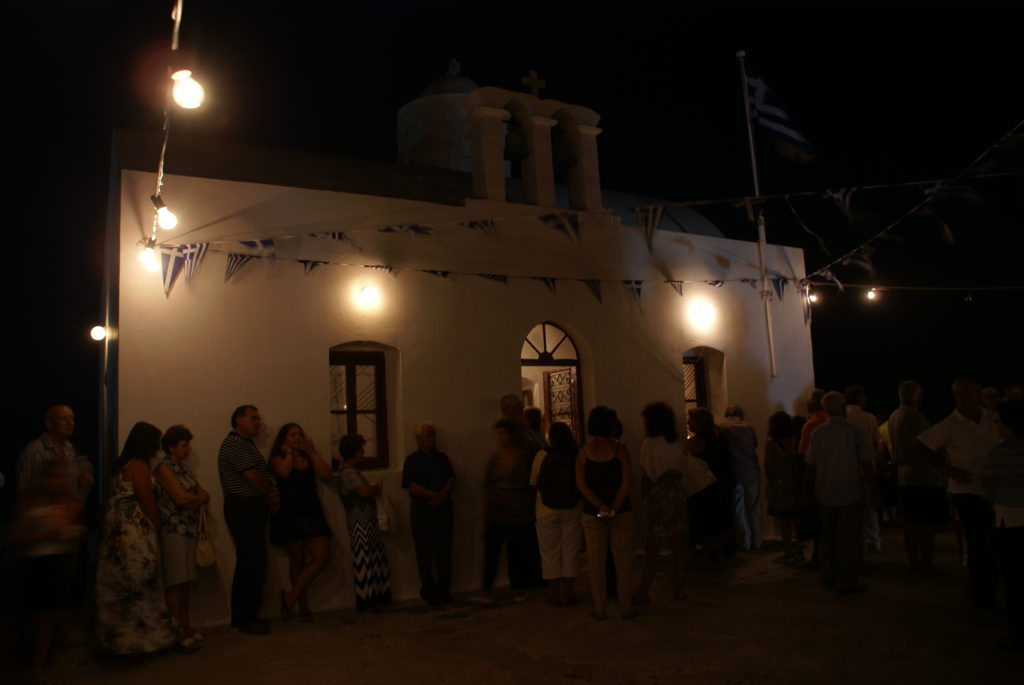
The chapel of Our Lady Skiniotissa at the top of the fortress. On the eve of the feast of the Dormition of the Mother of God, Vespers and the Lity are celebrated here.
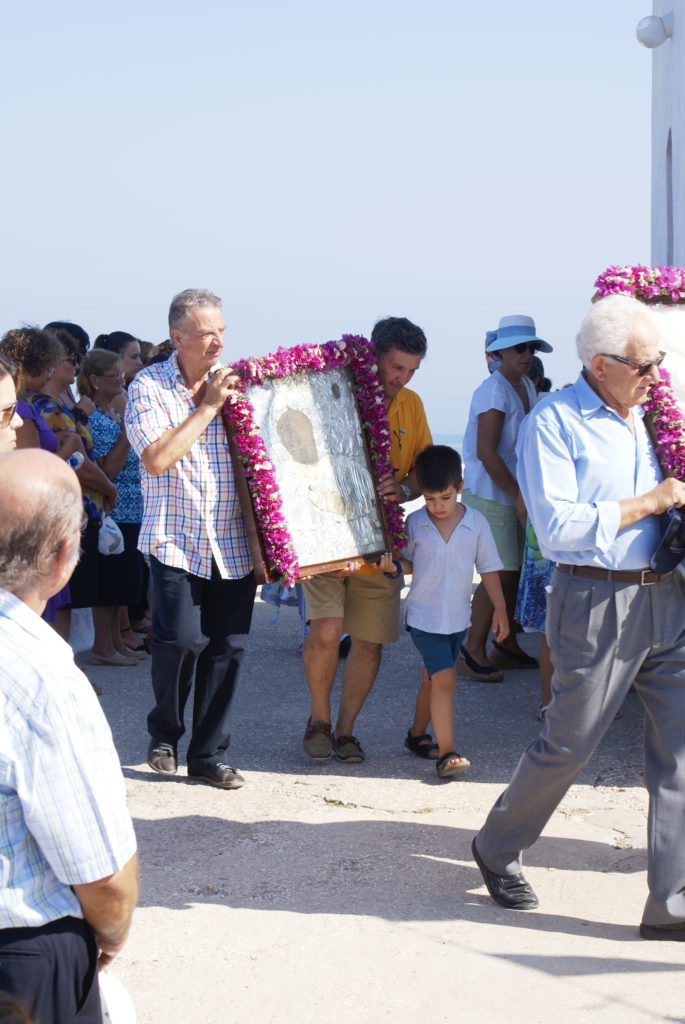
On the day of the Dormition, after the end of the Divine Liturgy, the icon was carried in procession.
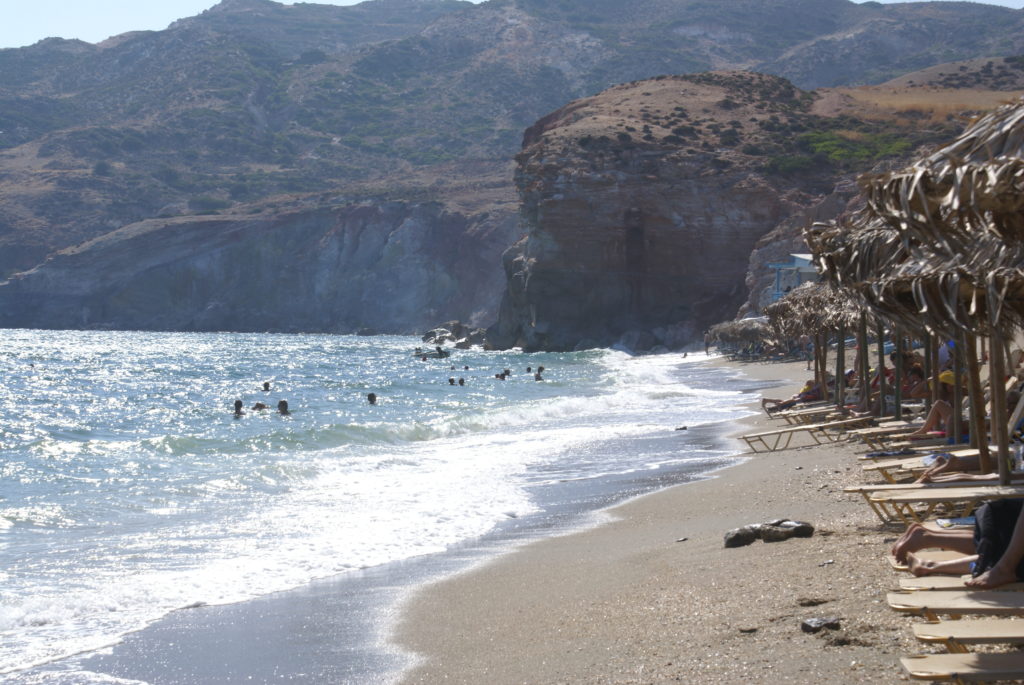
The beach at Paliokhori is one of the most popular on Milos. It’s a huge beach with rough sand and pebbles, surrounded by colourful rocks and a view of the Cretan Sea.
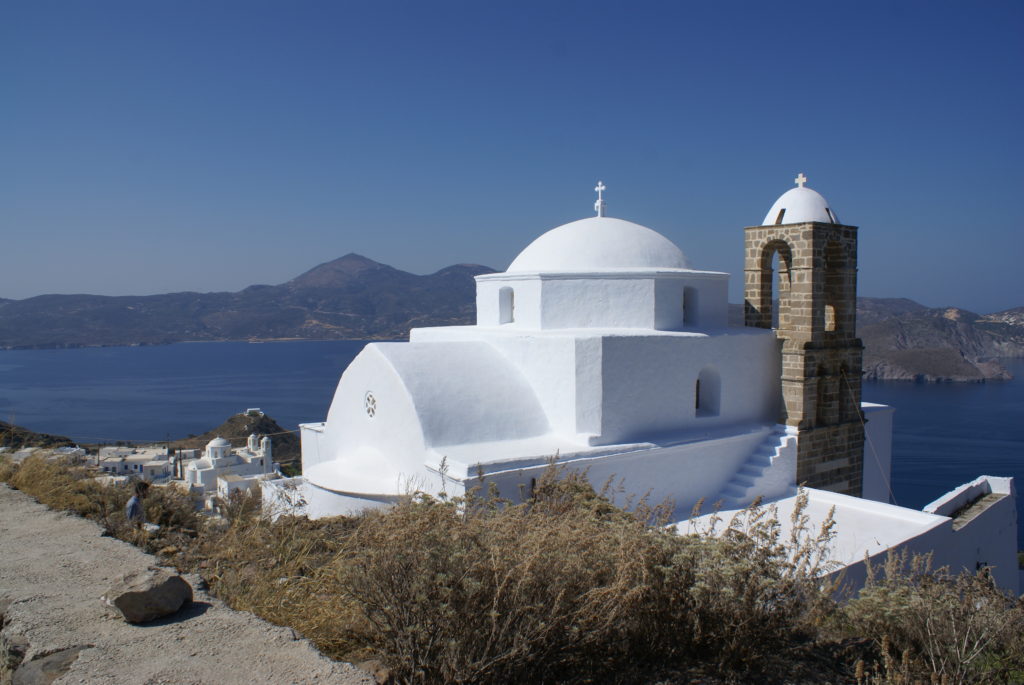
The church of Our Lady the Thalassitra stands on a prominent site a little below the top of the fortress.
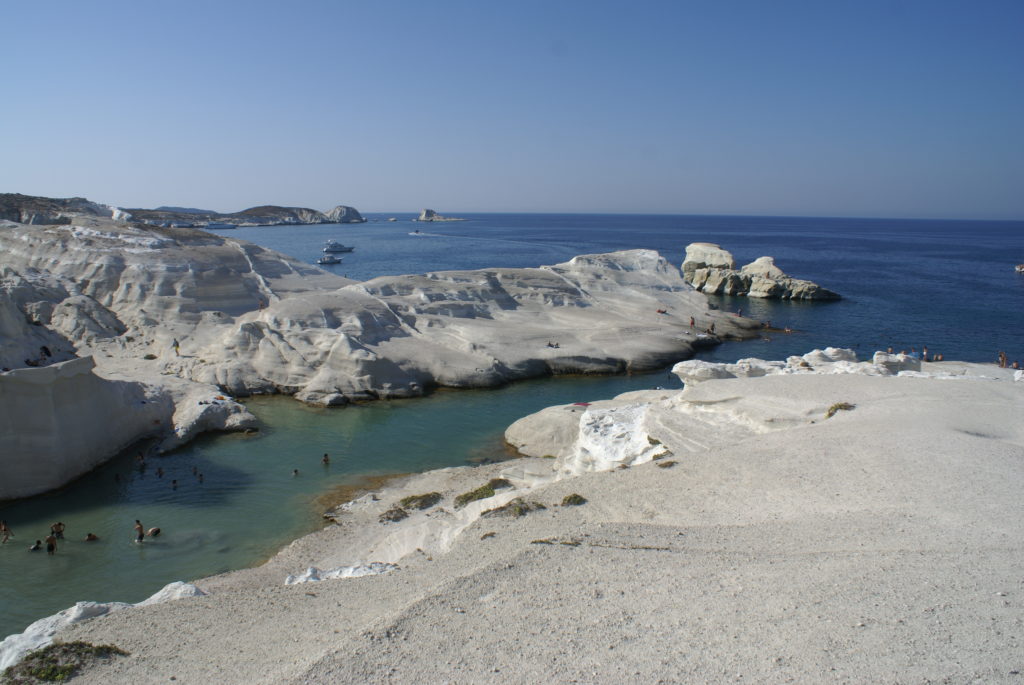
Sarakiniko is one of the most important sights on the island, because of its inimitable geological formation. Volcanic activity millions of years ago and erosion by the north winds and the sea have sculpted an area of particular uniqueness.
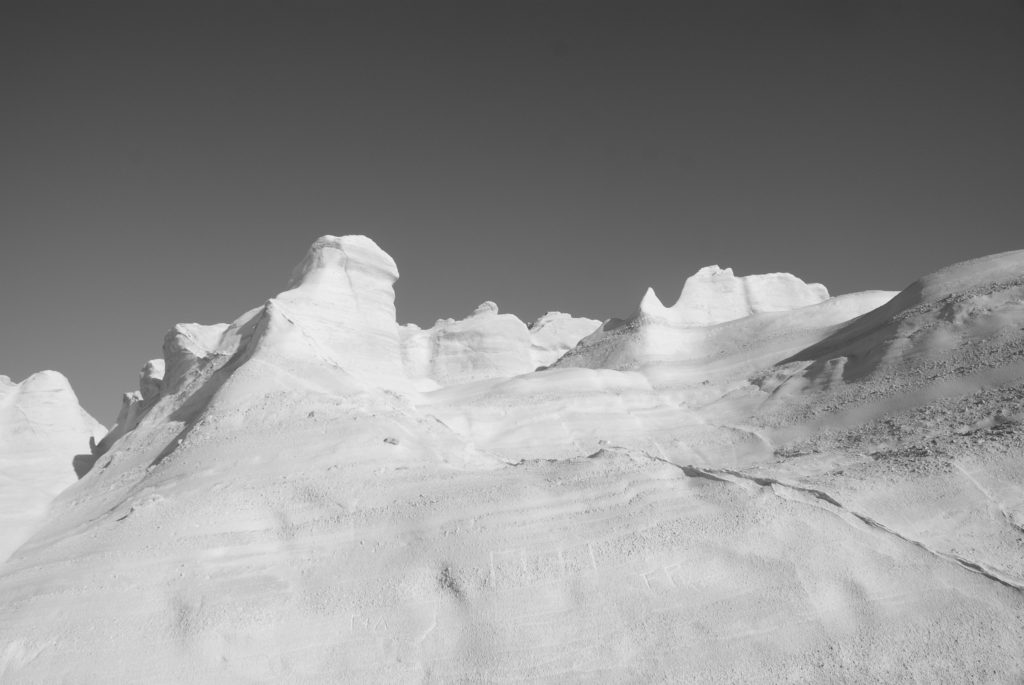
Some people call the landscape ‘lunar’. And with good reason.
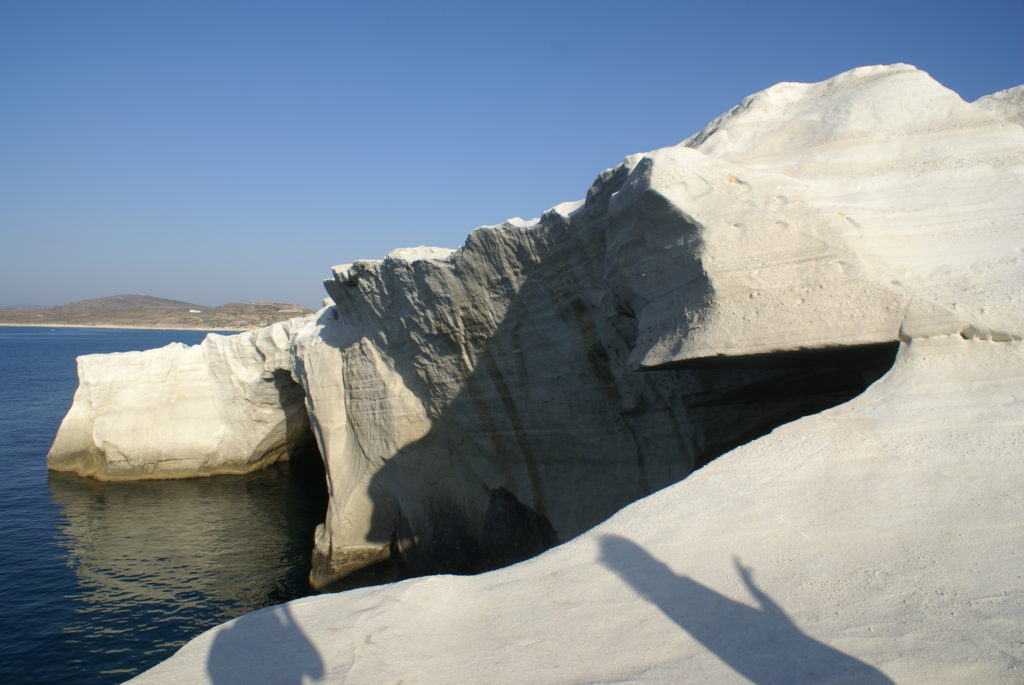
The place gets its name from the Saracen pirates who used it as a lair and refuge.
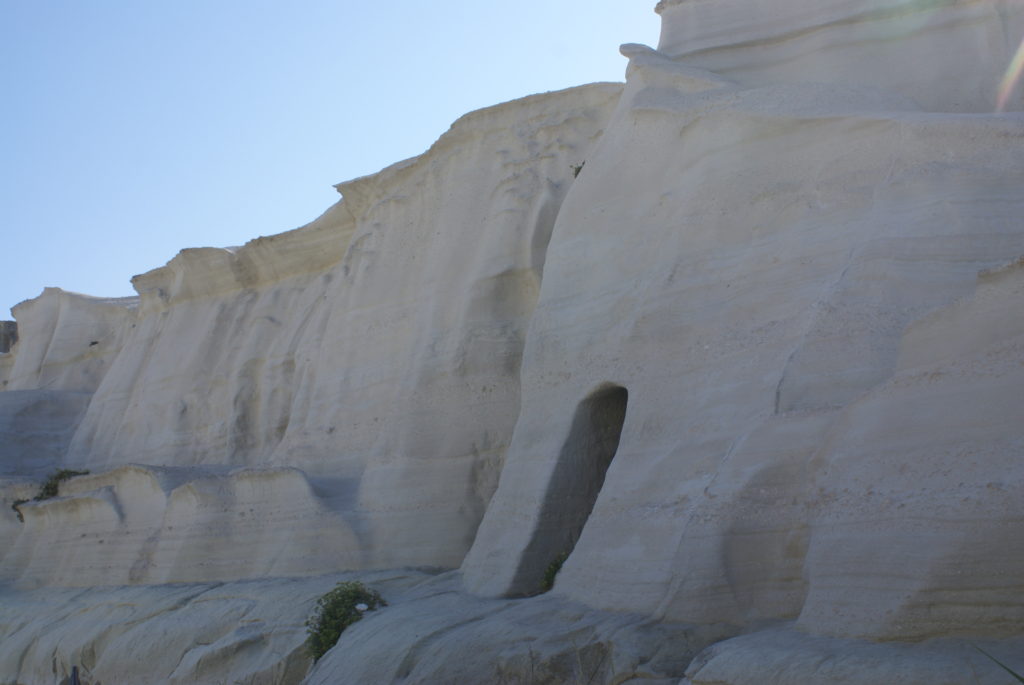
Throughout the area there are formations of bright white rocks, many of which contain fossils.
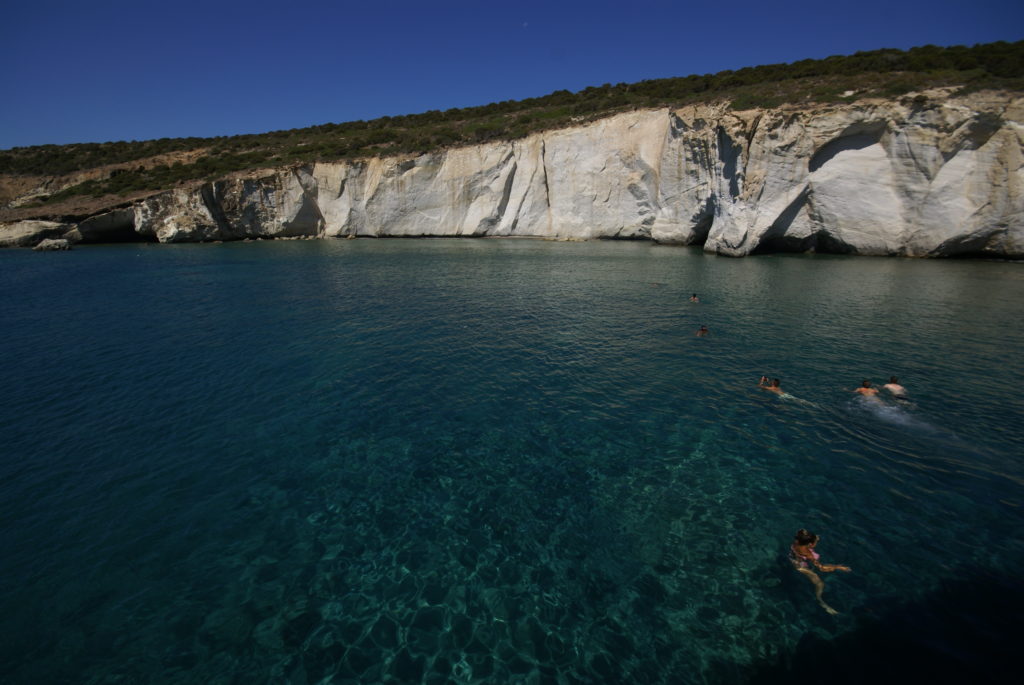
Kleftiko is one of the beaches accessible only by boat. The greenish-blue water makes the place even more beautiful.
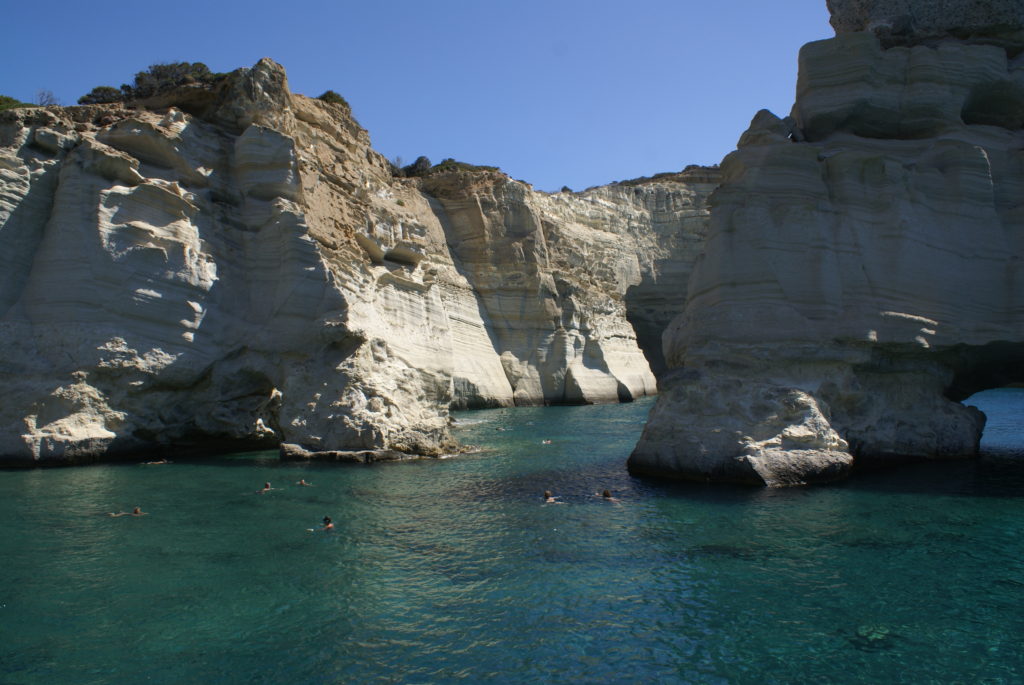
Kleftiko was also used as a refuge for pirates, because of its geomorphology, with the many caves which have been made in the rocks.
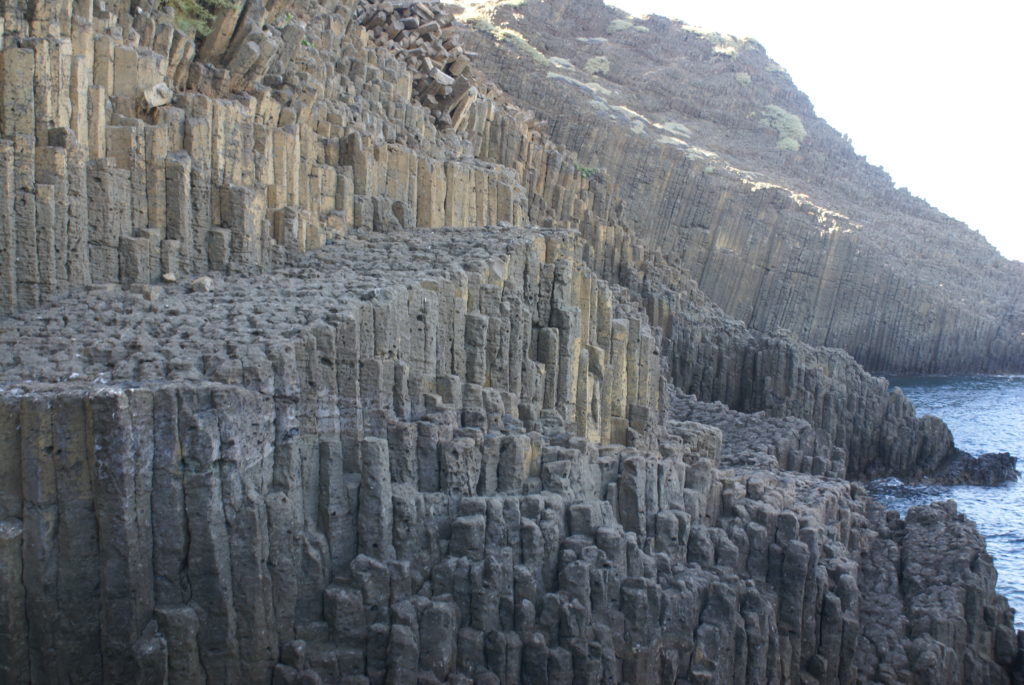
The Seagull islands are three bare rocks on the northern side of the island which were created by volcanic lava. Their sole inhabitants are the seagulls from which they get their name.


